Vegan Macarons Using Aquafaba
Today, we’re diving into the world of vegan macarons. These treats are a little bit special. They are soft, chewy, and filled with buttercream or chocolate. Making them is a way to show off your baking skills.
Now, creating these macarons without eggs can be challenging, especially for beginners. But don’t worry! I’m here to guide you with easy-to-follow instructions. This way, you will be able to make vegan macarons successfully on your first attempt. Let’s get started!
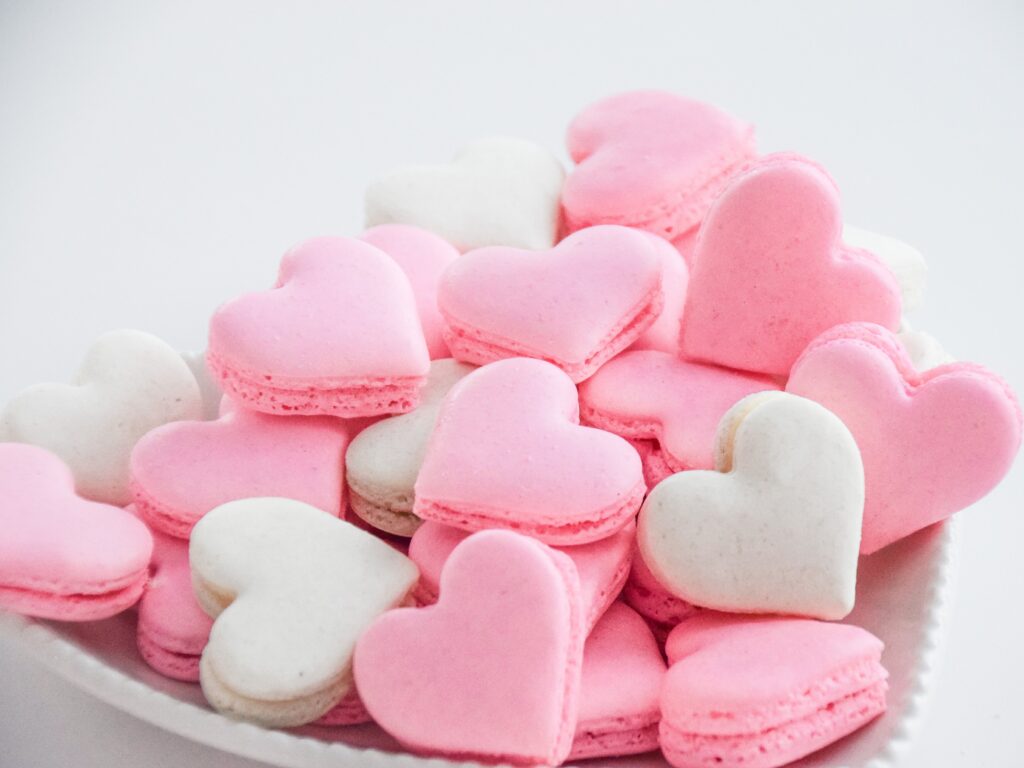
How to make Vegan Macarons
Making vegan macarons involves replacing the egg whites typically found in traditional recipes. In standard macaron shells, you use sugar, almond flour, and egg whites (adding water if you opt for the Italian method).
However, in vegan versions, the focus is on finding an alternative to those egg whites. This adjustment is key to keeping macarons light and fluffy, which they are famous for, while following vegan practices.
If you’re new to vegan baking, I’ve got something cool to share: aquafaba.
Ever wondered what to do with the gooey stuff left in your canned chickpeas? That’s aquafaba, and it’s a game-changer in vegan baking. It’s basically the water left after cooking beans, like chickpeas.
Even though it might not seem like much, aquafaba is amazing for cooking without eggs. When you whip it up, it turns into a fluffy foam just like beaten eggs, perfect for making your baked goods light and airy. So, next time, think twice before you throw out the liquid from your can of chickpeas.

Preparing Aquafaba
But before you dive into baking, heed this crucial tip: reduce the aquafaba. Simmer it in a pot until it thickens, eliminating excess water content. This step is very important for a successful meringue, ensuring it holds its shape during baking.
Reducing the Aquafaba:
- Weigh the liquid from canned chickpeas and simmer it until it’s reduced by half
- Allow the reduced aquafaba to cool in the fridge overnight, transforming into a gelatinous consistency similar to egg whites
Preparation Tips:
- Cleanliness is key. Ensure your utensils and mixing bowl are immaculate to prevent any interference with the aquafaba’s whipping process
- Opt for a smaller bowl to fasten the whipping process, ensuring a quicker formation of stiff peaks
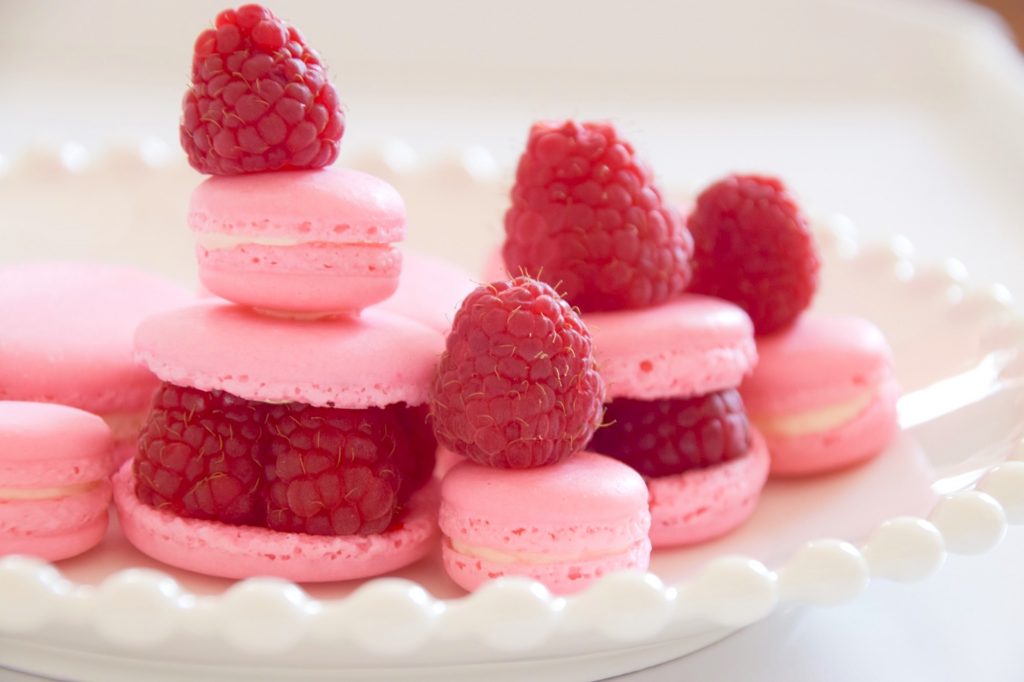
Making Vegan Macaron Shells
Ingredients:
- 2.8 oz (80g) aquafaba (liquid from canned chickpeas, reduced to half its volume)
- 1/8 teaspoon cream of tartar
- 5.65 oz (160g) almond flour
- 5.65 oz (160g) powdered sugar
- 2.8 oz (80g) granulated sugar
- Gel food coloring (optional)
Instructions:
- Prepare Aquafaba:
- Reduce the aquafaba (liquid from canned chickpeas) to half its volume by simmering it in a saucepan over low heat. Let it cool completely before using.
- Preheat Oven:
- Preheat your oven to 300°F (150°C) and line baking sheets with parchment paper or silicone mats.
- Sift Dry Ingredients:
- In a large bowl, sift together almond flour and powdered sugar to remove any lumps. Set aside.
- Whip Aquafaba Meringue:
- In a clean mixing bowl, add the cooled aquafaba and cream of tartar.
- Using an electric mixer, whip the aquafaba on high speed until stiff peaks form.
- Combine Dry Ingredients with Meringue:
- Gently fold the sifted almond flour and powdered sugar mixture into the aquafaba meringue until fully combined. Be careful not to overmix.
- Add Food Coloring (Optional):
- If desired, divide the macaron batter into separate bowls and add food coloring to each bowl. Gently fold until the color is evenly distributed.
- Pipe Macaron Shells:
- Transfer the colored macaron batter into a piping bag fitted with a round tip.
- Pipe small circles of batter onto the prepared baking sheets, leaving space between each circle to allow for spreading.
- Tap and Rest:
- Tap the baking sheets gently on the countertop to release any air bubbles.
- Let the piped macaron shells rest at room temperature for about 30 minutes to develop a thin skin on the surface.
- Bake:
- After resting, bake the macaron shells in the preheated oven for 12-15 minutes, or until the shells are set and firm to the touch.
- Remove from the oven and let the macaron shells cool completely on the baking sheets before carefully removing them.
With these changes, you should be able to make around 50 vegan macarons. Remember, precision is crucial in the process of making macarons, so take your time and enjoy each step. Your kitchen will soon be filled with the sweet scent of freshly baked macarons!
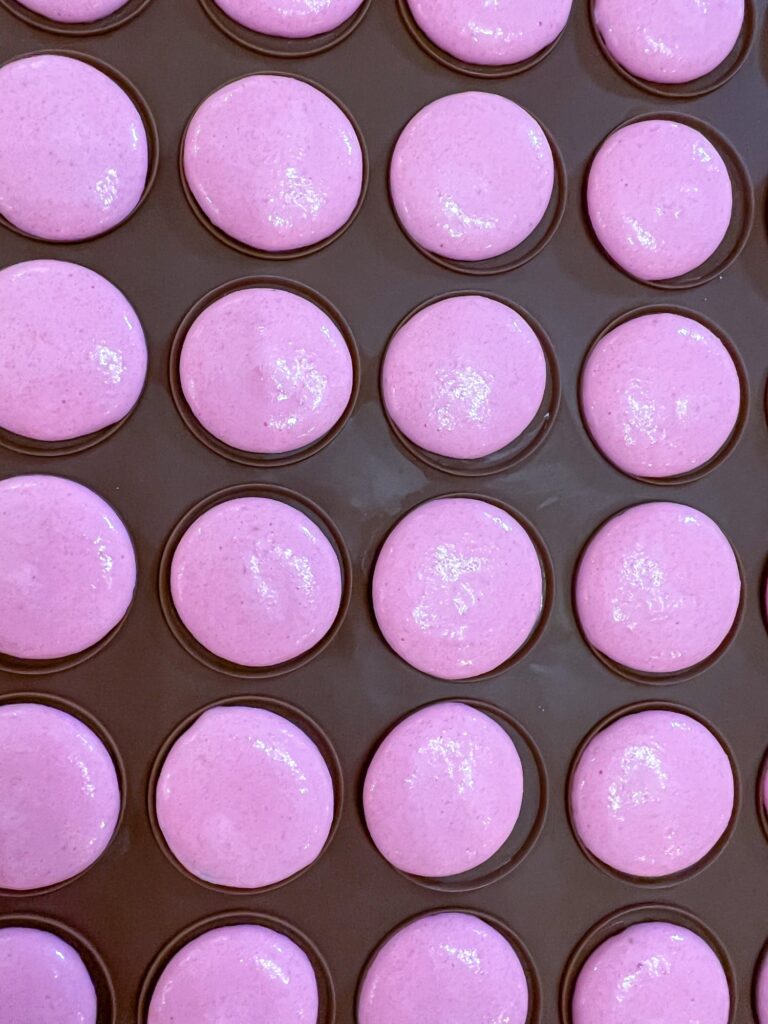
Making Vegan Macaron Filling
In my experience, making the perfect filling for vegan macarons is just as crucial as making the delicate shells. Let me share with you two of my go-to recipes that have never failed me: vegan buttercream and vegan ganache.
For the vegan buttercream, you will need:
- 7.05 oz (200g) icing sugar
- 3.5 oz (100g) vegan margarine
- 1 teaspoon vanilla extract
- Plant-based milk (as needed)
Start by mixing together the icing sugar, vegan margarine, and vanilla extract until smooth. If the mixture is too thick, add a splash of plant-based milk to achieve the desired consistency. Then, whip it all up with an electric whisk until it turns pale and fluffy. It’s a simple yet decadent filling that pairs perfectly with the lightness of macarons.
Now, onto the vegan ganache. This one is for those who crave something a bit richer and more indulgent. You will need:
- 7.05 oz (200g) dark vegan chocolate, finely chopped
- 1/2 cup (120ml) full-fat coconut milk
Start by heating up the coconut milk in a small saucepan until it’s just simmering. Meanwhile, finely chop the dark vegan chocolate and place it in a heatproof bowl. Once the coconut milk is simmering, pour it over the chopped chocolate and let it sit for about a minute to allow the heat to melt the chocolate.
After that, gently stir the mixture until the chocolate is completely melted and smooth. Let the ganache cool at room temperature for about 15-20 minutes, or until it reaches a spreadable consistency.
These recipes are the base, but don’t be afraid to get creative! You can add your favorite flavors to both the buttercream and ganache. For example, you can use fruit purees, extracts, or even spices. The possibilities are endless, and experimenting with different flavor combinations is fun!
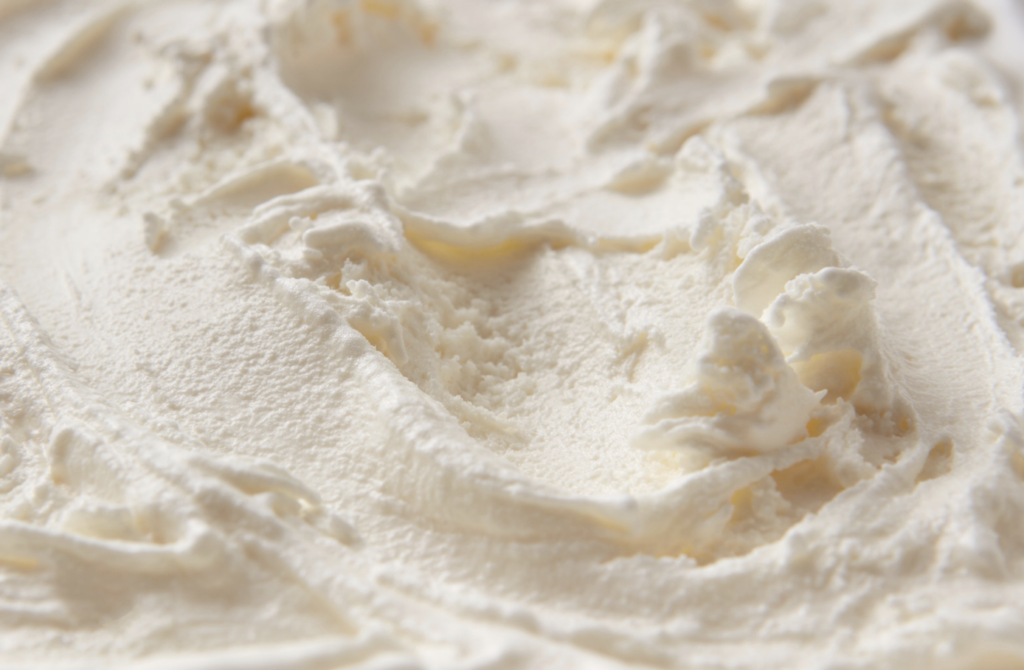
Troubleshooting Tips
In conclusion, while making vegan macarons with aquafaba may present some challenges, armed with the right knowledge and troubleshooting tips, anyone can master the art of creating these delicate and delightful treats.
- Aquafaba Consistency: Ensure that the aquafaba is whipped to stiff peaks before adding other ingredients. If it’s not reaching stiff peaks, it may be due to residual oil or moisture in the mixing bowl or utensils. Make sure everything is clean and dry before whipping.
- Macaron Shell Texture: If the macaron shells turn out too flat or spread too much while baking, it could be due to over-mixing the batter. Be cautious not to over-mix when folding the almond flour mixture into the aquafaba meringue. Aim for a smooth, thick batter with a lava-like consistency.
- Cracked Shells: Cracked macaron shells are often a result of under-mixing the batter or baking at too high temperature. To prevent this, make sure that the batter is properly mixed and that the oven temperature is accurate. Additionally, letting the piped macarons rest before baking helps to develop a thin skin on the surface, which prevents cracking.
- Hollow Shells: If the macaron shells are hollow inside, it may indicate that the batter was over-mixed or that the oven temperature was too high. Try reducing the mixing time and double-checking the oven temperature with an oven thermometer to achieve more consistent results.
- Sticking to Baking Sheet: If the macaron shells stick to the baking sheet after baking, they may not have been baked long enough or cooled completely before attempting to remove them. Allow the macarons to cool completely on the baking sheet before gently peeling them off or using a thin spatula to lift them.
- Filling Consistency: The buttercream filling should be smooth and creamy, but not too runny. If it’s too thin, add more powdered sugar to thicken it. Conversely, if it’s too thick, add a small amount of plant-based milk to loosen it until it reaches the desired consistency for piping.
Remember to pay attention to detail, from preparing the aquafaba to achieving the perfect macaron shell texture and filling consistency.
With patience, practice, you will be well on your way to impressing friends and family with your homemade vegan macarons. Roll up your sleeves, preheat that oven, and let the baking adventures begin!
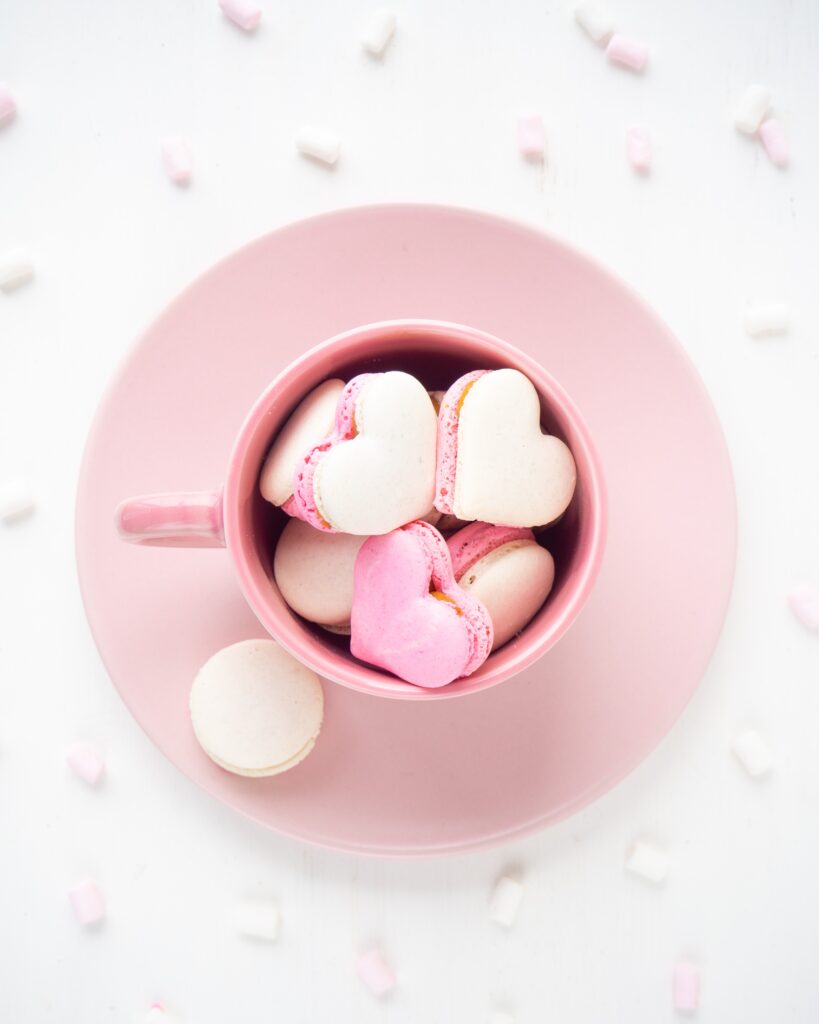
Storage and Serving Suggestions
When it comes to storing and serving your freshly made vegan macarons, a few simple tips can make all the difference.
Storage
After baking and assembling your vegan macarons, it’s essential to store them properly to maintain their freshness and texture. Here are some tips for storing vegan macarons:
- Airtight Container: Transfer the filled macarons to an airtight container to protect them from air and moisture. This helps prevent them from becoming stale or absorbing unwanted odors from the surrounding environment.
- Refrigeration: Store the macarons in the refrigerator if you’re not planning to consume them immediately. Refrigeration helps preserve the freshness of the buttercream filling and extends the shelf life of the macarons. Macarons last in the refrigerator for up to one week.
- Layering: When storing multiple layers of macarons in a container, place parchment paper or wax paper between each layer to prevent them from sticking together or getting damaged.
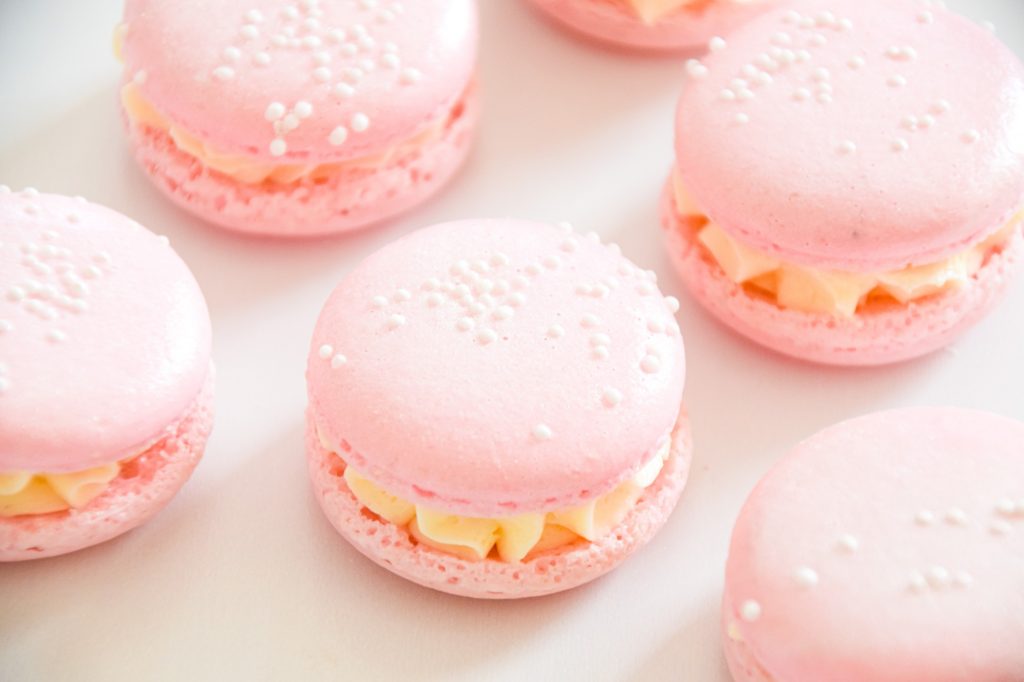
Serving
When it comes to serving vegan macarons, presentation is key. Here are some suggestions for serving vegan macarons in style:
- Room Temperature: Before serving, allow the refrigerated macarons to come to room temperature for about 10-15 minutes. This allows the flavors to fully develop and the texture to soften slightly for a more enjoyable eating experience.
- Garnishes: Enhance the visual appeal of your vegan macarons by garnishing them with edible decorations such as fresh fruit slices, edible flowers, chopped nuts, or a dusting of cocoa powder or powdered sugar.
- Pairings: Consider serving vegan macarons alongside your favorite hot beverage, such as tea, coffee, or hot chocolate. The combination of the delicate sweetness of the macarons with the warmth of a beverage creates a delightful sensory experience.
- Presentation: Arrange the macarons on a decorative serving tray or macaron tower stand to showcase their vibrant colors and elegant shapes. You can also incorporate complementary decorations or signage to add a personalized touch to your presentation.
By following these tips for storing and serving vegan macarons, you can ensure that your homemade treats remain fresh, flavorful, and visually appealing for all to enjoy!
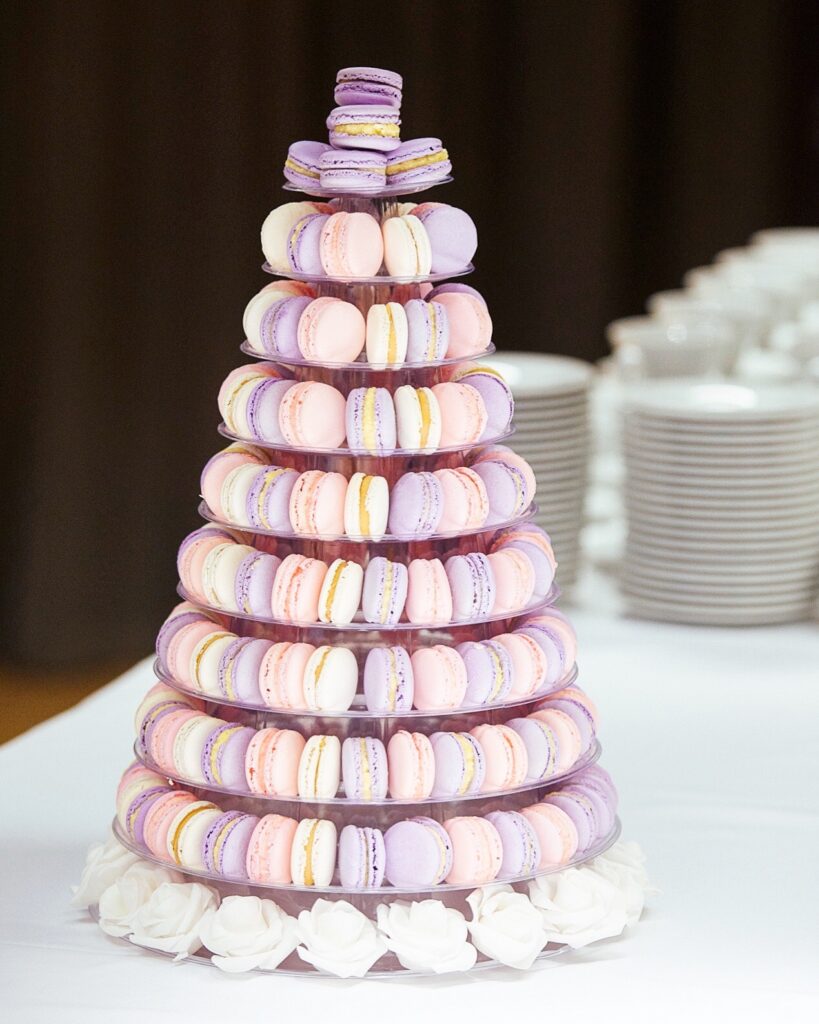
Enjoy your macarons!
Belli xx
